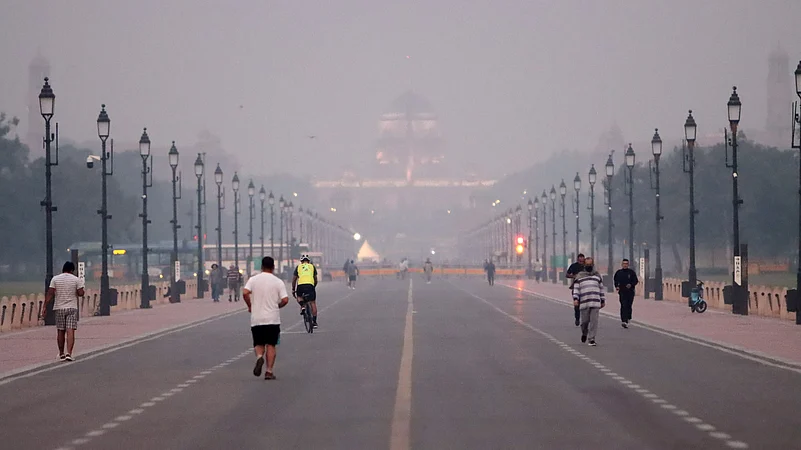Delhi's air quality index (AQI) experienced a slight uptick on November 1, a day after Diwali. Although the air quality deteriorated as is typical during the festival, the increase was less severe than in previous years.
According to data from the Central Pollution Control Board (CPCB), the 24-hour average AQI on Friday stood at 339, just 11 points from Thursday's reading of 328. Both figures fell into the 'very poor' category, which ranges from 301 to 400. Still, it is noteworthy that this year’s post-Diwali air quality represented the lowest levels of pollution recorded since 2015, aside from last year’s numbers.
While the readings on the day before Diwali, were worse than the previous couple of years, they still indicated a relative improvement compared to 2021, which saw the AQI soar to an alarming 462 the day after the festival.
How post-Diwali air was cleaner despite firecracker use
Several factors played a crucial role in mitigating the post-Diwali air quality this year including warm October and strong winds. The India Meteorological Department (IMD) reported that October 2024 was the warmest in 73 years, with average temperatures significantly higher than in previous years. This contrasts sharply with last year's Diwali, which was celebrated on November 13, when temperatures dropped to a monthly minimum of 13 degrees Celsius.
Strong winds throughout the festival period also helped disperse pollutants, preventing a higher rise in AQI levels. While firecrackers were banned, they were still used in many parts of the city, including Lajpat Nagar, Kalkaji, Chhatarpur, Jaunapur, East of Kailash, Saket, Rohini, Dwarka, Punjabi Bagh, Vikas Puri, Dilshad Garden, and Burari, contributing to the overall pollution.
On the night of Diwali (Thursday), the AQI skyrocketed to 999 in certain areas - indicating a severe air quality crisis. A CPCB report indicated that while PM2.5 levels saw a 4 percent decrease compared to the previous year, PM10 levels increased by 11 percent.
Residents struggle to breathe
A recent survey by ‘LocalCircles’ revealed the health implications of the pollution spike. Among the 21,000 respondents from Delhi and neighbouring NCR regions, 69 percent reported at least one member in every family suffering from respiratory issues, such as sore throats and coughs, while 62 percent experienced eye irritation due to poor air quality. The prevalence of symptoms like headaches and difficulty concentrating was also noted among 23 percent of families.
The survey also indicated a significant change in residents' responses to pollution management, with only 23 percent planning to use air purifiers to combat air quality issues, and a similar percentage expressing a resigned attitude towards living with the pollution.
15 percent of the respondent stated that they plan to ‘just live with it’ and carry on with their daily activity by wearing a mask when outdoors, consumption of immunity-boosting food or drinks, or traveling somewhere during these months.
















